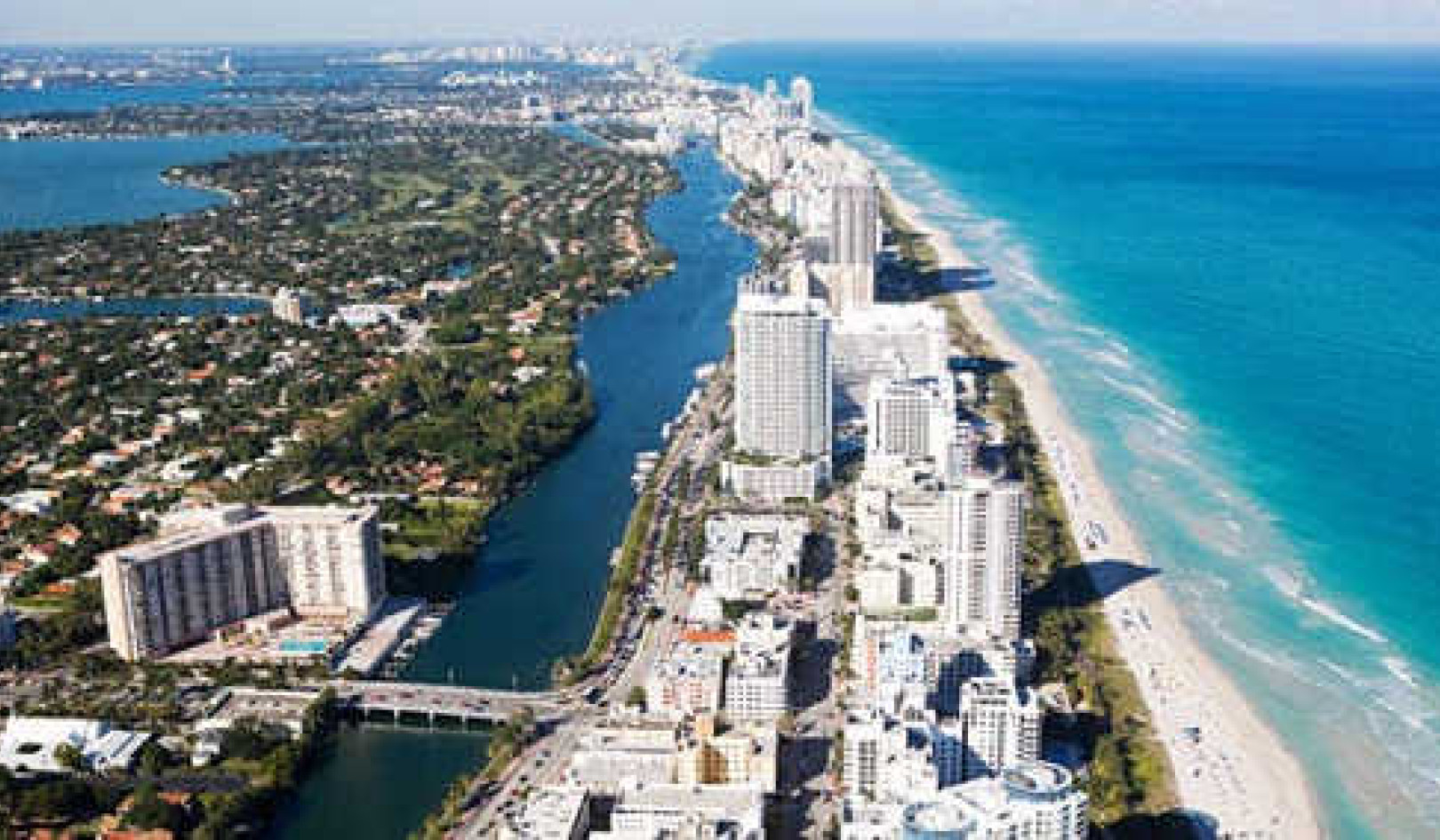
While in the timeframe of Earth’s lifespan human events are relatively short, the imprint of even small, collective action is large. A good example in relation to food and the environment is the impact of the Neolithic revolution of farming on who we are today and the world in which we live.
With the advent of farming came the possibility of providing abundant food to stabilize human populations, and as a result, they grew exponentially. But farming also changed the face of Earth and the peoples who inhabited the planet.
Evolution does not occur simply through changes in environment. Plants and animals themselves compete for resources and are always adapting to conditions, including those posed by each other (as in the case of the plants constantly shifting their chemical defenses against insects that want to eat them).
Even if the whole environment were stable, with no evolution, the plant and animal nations and individual plants and animals would continue to shift in their dance with each other and within their own species. This is why organics has it right—chemical applications are always short-sighted because plants and animals adapt, often quickly, and even more concerning, the ignored impacts of poisons in the environment and health effects are often long lasting as byproducts of the artificial inputs.
The Impact of Farming On Human Populations
Scientists studying the DNA of humans can now see the impact of farming on human populations. Not only did farming create stable and rapidly growing communities, it also changed the biology of humankind.
In Asia, for example, the post–Ice Age descendants of “Negritoes,” hunter-gatherers from Africa, were biologically overwhelmed by the burgeoning populations of Asian rice farmers. This is reflected, as well, in early European genes showing Near Eastern traits. Human populations shifted as a result of how food was produced. It’s a global phenomenon, given the population growth that agriculture provided, and it all happened in a relatively brief 10,000 years.
But there’s another dimension to this, as well. The change in diet changed populations, changed their genetics, and also produced bio cultural change. Belief systems shifted along with these food and genetic changes.
Peter Bellwood created a firestorm with his book, First Farmers: The Origins of Agricultural Societies (Wiley-Blackwell, 2004), which upset the apple cart of the orthodoxy that Europe, existing as a continent unto itself, was somehow immune from the biocultural changes of the Neolithic revolution. The shift in food and human populations shifted the gene pool, as well as the culture. Increasingly, linguistic, genetic, and archaeological data show that cultures changed in more far-reaching ways than merely whether plants were wildcrafted by roving hunter-gatherers or intentionally planted.
Not only can environmental conditions bring about adaptations of plant and animal species but biological changes can spur evolutionary changes, too. In fact, it’s a two-way street: a change in geographical conditions can spur biological and evolutionary changes, but biological and evolutionary changes can also spur geographical changes.
Gilgamesh cut down the forests to build cities and plant crops, but the resultant siltation made the water undrinkable, and the desertification destroyed the civilization he founded.
The Demise of the Old World and Unsustainable Farming Practices
 In his book, The Last Hours of Ancient Sunlight: The Fate of the World and What We Can Do Before It’s Too Late (Broadway, 2004), Thom Hartmann recounts how the Paleolithic revolution brought down the last Mesopotamian empire, and unsustainable farming practices (eerily like those being promulgated by “scientific,” “modern,” and “conventional” farming) created the vast desert that exists today.
In his book, The Last Hours of Ancient Sunlight: The Fate of the World and What We Can Do Before It’s Too Late (Broadway, 2004), Thom Hartmann recounts how the Paleolithic revolution brought down the last Mesopotamian empire, and unsustainable farming practices (eerily like those being promulgated by “scientific,” “modern,” and “conventional” farming) created the vast desert that exists today.
The demise of this empire cleared the way for the rise of Greece. But Greece also inherited the way of agriculture of the ancient Mesopotamians, denuding its forests for planting monocultures; its economy eventually collapsed, too, as the barren landscapes could only grow olive trees. Over-silted rivers, accumulated irrigation salts, and depleted soil failed to feed its population, and cities went into decline. That led to the rise of Rome, which followed the same agricultural practices that led to its decline, as well.
The pattern has been repeated since, with depletion in the Old World leading to exploration and conquest of the New World, until now, there is no more world to “conquer”— only our world that is left with unsustainable practices and headed toward global climate calamity.
The bottom line is this: The division between geographical or environmental evolution and adaptation and genetic and species evolution and adaptation is not a valid one. We are holographic in both how we react and what we choose to do, and our environment is part of that adaptive dynamic. The environment is not “out there,” but right here — what you are doing with your hands and your heart and your mind. And neither can your hands be divorced from your heart or your mind without consequence.
Synergy and Unity of Purpose
The production of biochar* as both a spiritual and practical activity by indigenous peoples of the Americas reflected a balanced synergistic relationship between humans and the environment. That unity of purpose and the resulting positive results were upended by the invasion of European settlers, who brought destructive, short-sighted patterns of development with them. It continues today, with the destruction of the rainforests in South America, as well as extractive practices elsewhere, creating an unsustainable and destructive hologram of its own.
As with any hologram, it changes as action changes. We may currently be in a situation that appears bleak globally regarding climate change and, indeed, unless human behavior changes, it is likely to worsen. But as we change our behavior, the situation changes, as well. In his outstanding book, Eaarth, Bill McKibben may have the facts on his side that it may be too late to return to the seasons and biologic milieu we once took for granted, that the carbon parts per billion in the atmosphere may be writing our future reality right now.
But that does not mean that collective action is for naught, or that individual action is meaningless. Indeed, as every great leader since well before Mahatma Gandhi has known, individuals have the power of choice on their side; a power that cannot be stopped by any institution, no matter how supposedly powerful or authoritative.
As Jesus said, faith the size of a mustard seed can indeed move mountains. The power of human faith and action guided by Spirit can be transformative. Realities are nothing but interchangeable choices to immortal spiritual beings; even, and especially, in human bodies; in an infinite universe. Recognizing and employing spiritual power is the key to change.
©2012 by Jim PathFinder Ewing. All Rights Reserved.
Reprinted with permission of the publisher,
Findhorn Press. www.findhornpress.com.
[* Biochar is a name for charcoal when it is used for particular purposes, especially as a soil amendment... Biochar thus has the potential to help mitigate climate change, via carbon sequestration. Independently, biochar can increase soil fertility of acidic soils (low pH soils), increase agricultural productivity, and provide protection against some foliar and soil-borne diseases...] Source: Wikipedia.
This article was adapted with permission from the book:
Conscious Food: Sustainable Growing, Spiritual Eating
by Jim PathFinder Ewing.
 When did growing and eating food cease to be considered sacred? How did food lose its connection with health? Why is our food system out of control? What simple steps can we each take to profoundly change our world as a healthier place for us all? Journalist, author Jim PathFinder Ewing answers these and other questions with his new book, Conscious Food. The book outlines how modern people can avoid being victims of biocultural evolution and the resultant entropy of declining global and personal health — and instead contribute to the movement toward mindful food choices and better world health, both physically and spiritually. The author discusses how society can nurture the unseen Spirit world that permeates plants through adopting nondenominational spiritual understandings, and includes how-to examples for growing organic food and fostering a supportive community and urban agriculture, as well as notes for expanded resources.
When did growing and eating food cease to be considered sacred? How did food lose its connection with health? Why is our food system out of control? What simple steps can we each take to profoundly change our world as a healthier place for us all? Journalist, author Jim PathFinder Ewing answers these and other questions with his new book, Conscious Food. The book outlines how modern people can avoid being victims of biocultural evolution and the resultant entropy of declining global and personal health — and instead contribute to the movement toward mindful food choices and better world health, both physically and spiritually. The author discusses how society can nurture the unseen Spirit world that permeates plants through adopting nondenominational spiritual understandings, and includes how-to examples for growing organic food and fostering a supportive community and urban agriculture, as well as notes for expanded resources.
Click here for more Info and/or to Order this book on Amazon.
About the Author
 Jim PathFinder Ewing is an award-winning journalist, author, and organic farmer. When not teaching farmers and would-be farmers how to grow sustainably using organic growing methods, Jim is a workshop leader, inspirational speaker and author in the fields of mind-body medicine and eco-spirituality. He is the author of six books (Findhorn Press) on mindfulness and alternative health, published in English, French, German, Russian and Japanese. He lives in Lena, Mississippi, where he also runs a commercial organic farm with his wife. For more, see his website: blueskywaters.com
Jim PathFinder Ewing is an award-winning journalist, author, and organic farmer. When not teaching farmers and would-be farmers how to grow sustainably using organic growing methods, Jim is a workshop leader, inspirational speaker and author in the fields of mind-body medicine and eco-spirituality. He is the author of six books (Findhorn Press) on mindfulness and alternative health, published in English, French, German, Russian and Japanese. He lives in Lena, Mississippi, where he also runs a commercial organic farm with his wife. For more, see his website: blueskywaters.com




























